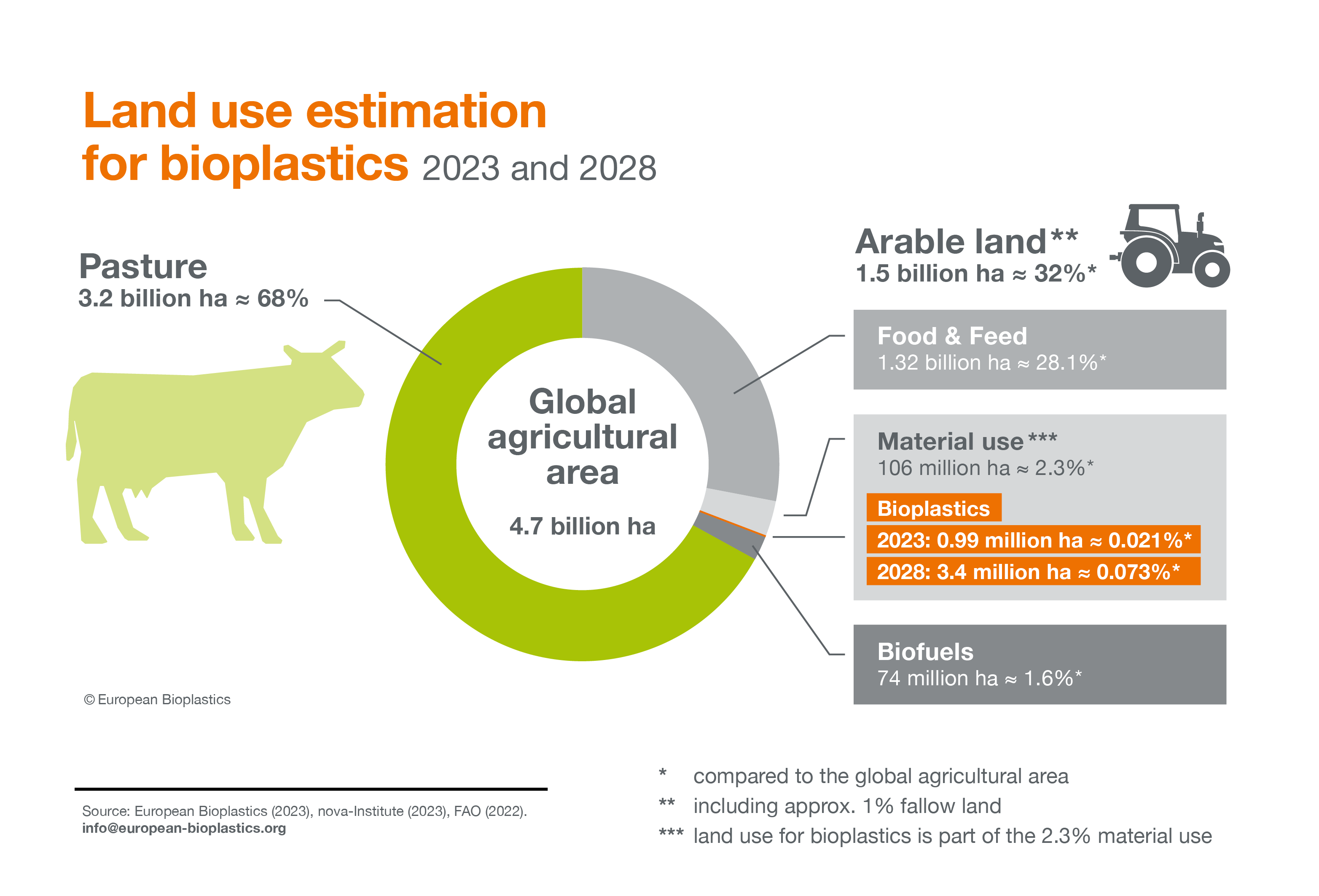Bioplastics are predominantly produced from agriculture feedstock (i.e., plants that are rich in carbohydrates) which is currently the most efficient way to produce bioplastics, as it requires the least amount of land to grow and produces the highest yields.

The huge difference between the land used for bioplastics and that for food, feed, and pasture shows that there is no competition between biomass use for food, feed and material use. Just about 0.021% of the global agricultural area is currently used to grow feedstock for bioplastics, while 96% is used for pasture and food/feed production.
Sustainable sourcing of feedstock is essential to create more sustainable products. In our Policy Manifesto published earlier this year, we urged the future Commission and co-legislators to prioritise sustainable feedstock sourcing as one of the key components of an actionable bioeconomy strategy to expand the EU’s manufacture of sustainably sourced bioplastics.